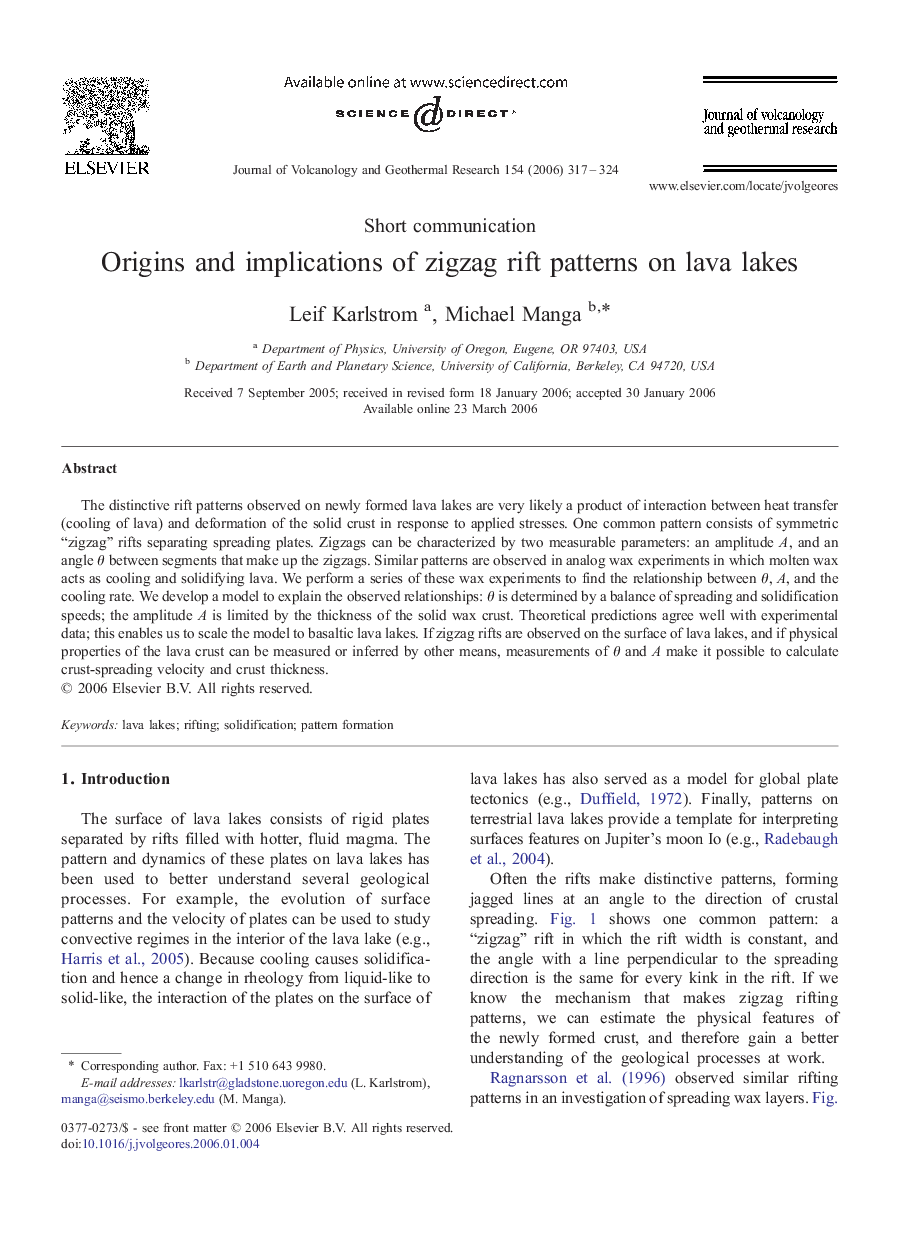| Article ID | Journal | Published Year | Pages | File Type |
|---|---|---|---|---|
| 4715065 | Journal of Volcanology and Geothermal Research | 2006 | 8 Pages |
The distinctive rift patterns observed on newly formed lava lakes are very likely a product of interaction between heat transfer (cooling of lava) and deformation of the solid crust in response to applied stresses. One common pattern consists of symmetric “zigzag” rifts separating spreading plates. Zigzags can be characterized by two measurable parameters: an amplitude A, and an angle θ between segments that make up the zigzags. Similar patterns are observed in analog wax experiments in which molten wax acts as cooling and solidifying lava. We perform a series of these wax experiments to find the relationship between θ, A, and the cooling rate. We develop a model to explain the observed relationships: θ is determined by a balance of spreading and solidification speeds; the amplitude A is limited by the thickness of the solid wax crust. Theoretical predictions agree well with experimental data; this enables us to scale the model to basaltic lava lakes. If zigzag rifts are observed on the surface of lava lakes, and if physical properties of the lava crust can be measured or inferred by other means, measurements of θ and A make it possible to calculate crust-spreading velocity and crust thickness.
